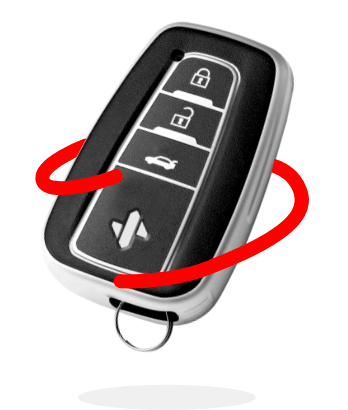Did you know that your vehicle make and model can make a big difference to your auto insurance?
You likely know that newer models often have updated safety features, along with enhanced technology (like backup cameras, wireless capabilities, and smart driving assistance). But make and model make more of a difference than simply the bells and whistles your car has.
It's essential to know the difference between the make and the model of your vehicle, since it can affect costs: like the cost of the vehicle and even auto insurance.
WHAT IS A VEHICLE MAKE AND MODEL?
The make of your vehicle is the company or brand that created it (like “Ford”), while the model is the specific type of vehicle (like “Fusion”).
The make, model, model year, body style, and trim level all have different meanings and impact your costs in different ways.
Simply put, doing your research on the difference between makes and models prior to purchase can save you time and money in the long run. Plus, you’ll need to know this information when trading it in, acquiring an auto loan, or purchasing car insurance.
WHY DOES MODEL YEAR MATTER?
As we mentioned, specific information about your vehicle will affect costs, including your vehicle model’s year.
First, it’s important to note that the model year isn’t necessarily the year your car was manufactured. For example, you’ll be able to purchase the 2023 model toward the end of 2022.
Since models change year to year, insurance companies are able to compare the statistical differences between the models to assess safety, accidents, and how much potential damage the vehicle can do.
WHY DOES VEHICLE MAKE MATTER?
The make (or brand) of your vehicle may not necessarily be the same as the manufacturer. After all, many car brands are owned by the same manufacturer. Toyota, for example, manufactures Toyota, Scion, and Lexus.
The make is important to auto insurance carriers as not all brands are created equally. This is a good starting point to understand the unique safety of your vehicle.
Examples of other popular vehicle make include: Chevrolet, Ford, Honda, Nissan, and Volkswagen.
WHY DOES VEHICLE MODEL MATTER?
Most carmakers have several car models in each body style category.
For example, Toyota has the Camry sedan, the Corolla sedan, the Avalon sedan, and the Highlander SUV. All these cars are from the same make (Toyota), but they're all different car models. Because of this, they can have very different values. The Camry is Toyota's flagship sedan, so it will always be worth more than the Corolla, even if they're the same year and have the same features.
On the other hand, the Avalon is Toyota's luxury sedan, so it will be worth more than the Camry even though it's not as popular. And finally, the Highlander is an SUV, which means it will be worth more than any model. All of this information comes in handy to know when trying to trade in, sell, or price out insurance for your car.
WHAT ELSE MATTERS, OTHER THAN VEHICLE YEAR, MAKE, AND MODEL?
Believe it or not, there’s, even more, you’ll need to know about your car — other than year, make, and model. Both body style and trim also matter a great deal for vehicle value (and car insurance).
Body Style
As we’ve seen, carmakers often offer customers a variety of body styles, to accommodate a wide variety of buyers. In fact, you’ll often find the same model in a variety of body styles to suit different tastes and needs.
The most common body styles include:
- Convertible
- Coupe
- Hatchback
- Sedan
- SUV
- Truck (regular cab, extended cab, crew cab, and extended crew cab)
- Wagon
A vehicle’s body style will affect the general shape of the car, doors, mechanics (like the engine and transmission), and ultimately impact the way the vehicle is used based on personal preference.
For instance, if you want to haul a lot of heavy materials, a sedan is probably not the right choice; or if you plan to drive around your 5 children, a convertible is not the best bet.
Trim Level or Package
While body style affects the overall shape and design for each model, trim level refers to specific equipment and styling options available for each model.
Typical trim packages include: standard, sport, and luxury:
- Standard trim vehicles are often the base model, with no additional upgrades.
- Sport trims often have upgraded engine performance and better handling.
- Luxury trims feature upgraded interiors and smoother suspensions.
When shopping for, selling, or getting insurance quotes for your vehicle, it’s essential to know what your trim is in order to properly assess the car’s value.
HOW TO FIND YOUR VEHICLE’S MAKE AND MODEL
Having trouble finding your vehicle’s make and model? Here are two easy steps to finding it.
- For the make, look no further than the grill or back end of the vehicle. Carmakers aren’t shy about displaying their logos, loud and proud.
- For the model, you might also find it on the truck of the vehicle, or you can run your VIN. This 17-character code is most often printed inside the driver’s side door or within your owner’s manual.
As you’ve learned, understanding your vehicle’s make and model (as well as year, body style, and even trim) will go far in knowing its value for purchase, sale, or insurance.
If you need help finding the best car insurance coverage for the best price based on your unique vehicle make and model, start by speaking to a SimplyIOA agent at 833.872.4467 or get an auto insurance quote online now.










